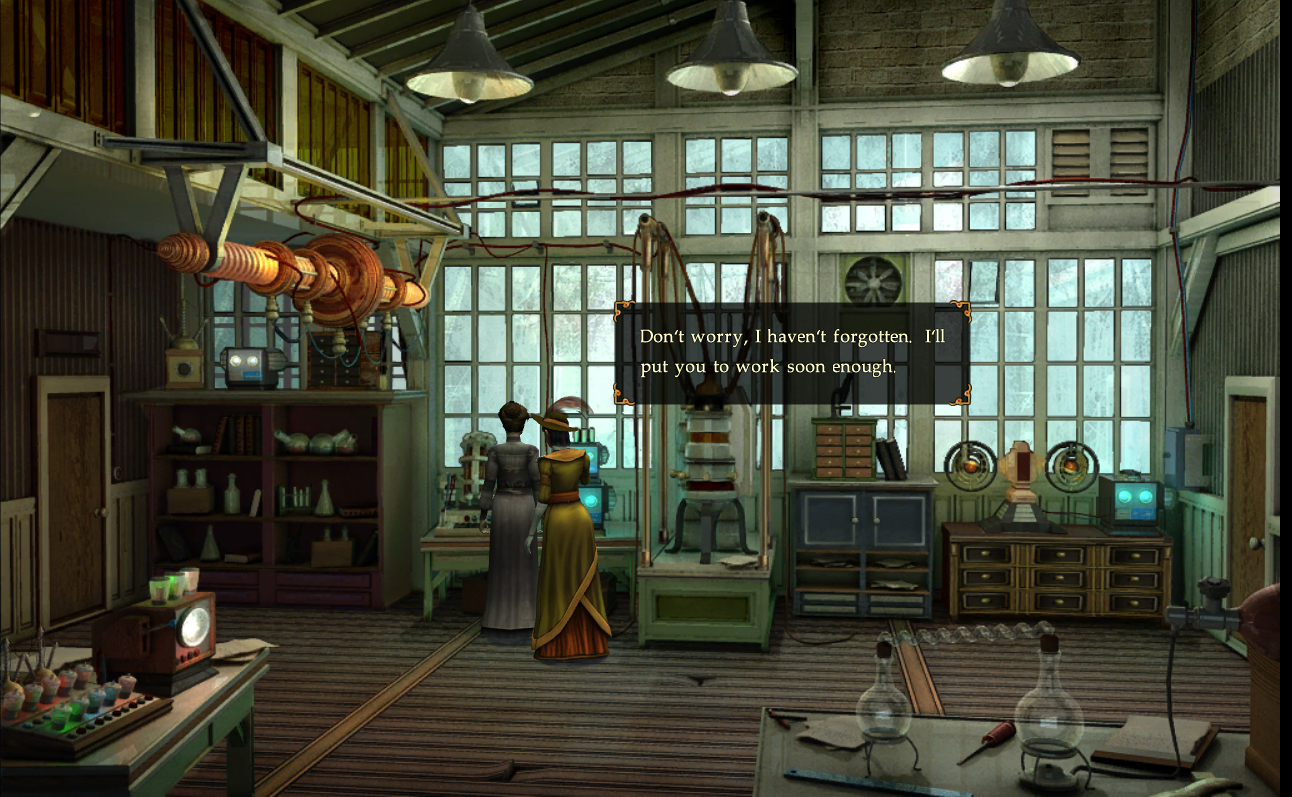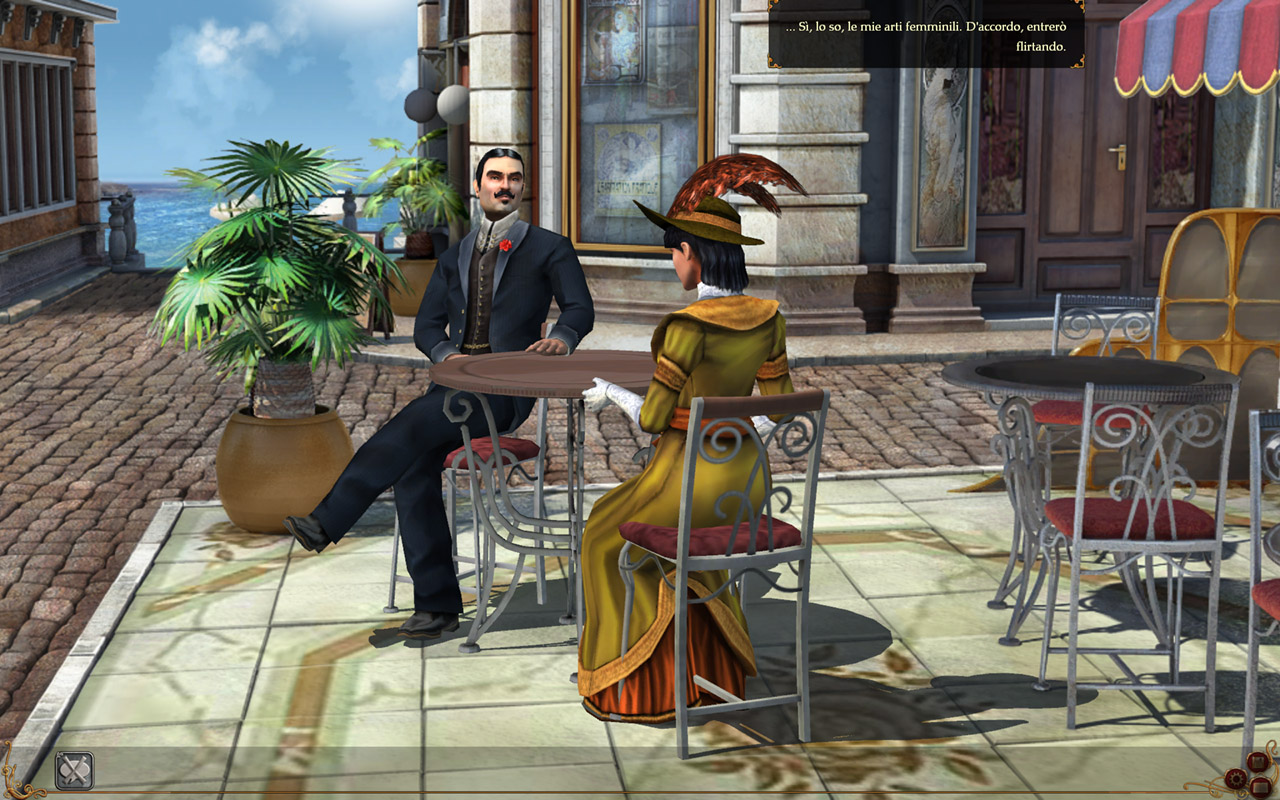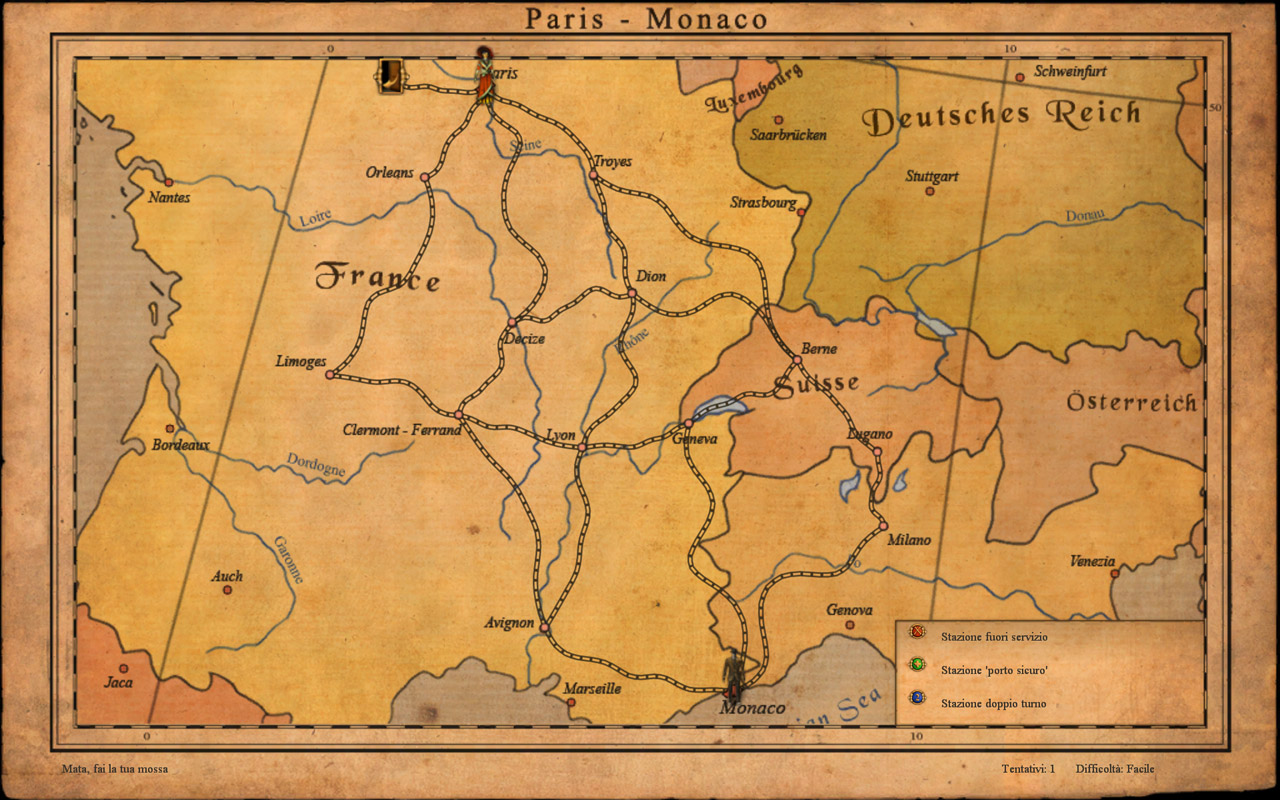Articles

Mata Hari Page One

There are probably some of you who were bewildered by Mojo’s coverage of Mata Hari, it neither being the product of LucasArts nor any of the recognized “spiritual successor” companies that we follow. Instead, the game was published and developed by German adventure studio dtp entertainment (most recently the funder of Autumn Moon’s Ghost Pirates of Vooju Island). Its design and writing, however, were outsourced to none other than Hal Barwood and Noah Falstein, veterans of the LEC golden age who have been freelancing since their lengthy stints at LucasArts.
No doubt best known for their Indiana Jones-heavy resumes, especially their collaboration on the classic Indiana Jones and the Fate of Atlantis, Barwood and Falstein reunited not only with each other on Mata Hari for the first time in over a decade and a half, but with the graphic adventure genre as well. It is the pedigree their involvement lends Mata Hari that elevates the title to that prestigious distinction of Mojo Relevant.
Prior to the game’s release, some of the few things we had to go on from the extremely muted marketing campaign included a raunchy looking cover design, talk of such mechanics as Mata’s “seduction” abilities, and some sort of stage performing mini-game that involved tantalizing an audience with properly timed dance moves. These selected drops of intel instilled a little bit of…apprehension… among those who had the game on their radar, with the more cynical of us fearing that it was being approached as some sort of misguided period piece counterpart to Leisure Suit Larry.
Fortunately, not only did this suspicion turn out to be completely and mercifully wrong, but Mata Hari is a downright understated little gem, and I suspect its portrayal of the infamous dancer-turned-spy will be very attractive to gamers who measure maturity in ways at variance with the ESRB. Mata is allowed three dimensions, and sexuality is but one of her weapons in an arsenal that includes great cunning and resourcefulness, the cornerstones of any effective adventure game lead. The game assumes the style of a historical drama, and has a genuine interest in exploring the ramifications of the rather compelling circumstance that is being a female agent of espionage in the early 1900s.

Do not misunderstand; Mata Hari and historical accuracy are only synonymous when convenient – and that is how it should be, given that the version of her best known is a figure of legend rather than a real human being plucked from the objective pages of history. The game has no issue with taking liberties with facts as well as inventing a few of its own to fill in the spy’s largely mysterious background or to sustain the entertainment factor. For one thing, you can expect to see Mata bumping into celebrities of the era Forrest Gump style; the game is replete with “cameos” by the likes of Marie Curie, Mercedes Jellinek, and Elsbeth Schragmuller, and even manages a twist ending for a story whose conclusion would seem to have already been written.
But despite being an unapologetic work of fiction, Mata Hari successfully gives off the feel of a historical recounting. Exploiting the era of its setting, the twilight of the Belle Époque, to great effect, Mata Hari’s romanticized take on the social age that serves as its backdrop evokes a distinct and permeating atmosphere that for my money constitutes much of the game’s appeal.
Comparisons to Fate of Atlantis are apt for reasons deeper than you might assume. There are certainly many parallels to be drawn between the two titles’ gameplay, but at a higher level, Mata Hari and Indiana Jones as lead characters share an awful lot of traits. Both are tenacious, globe-trotting adventurers whose pulpy, larger-than-life escapades are set against exotic locations during an iconic period of history. Sure, Mata Hari’s tone is a little more serious than Indy, and it is no breakneck, bare-knuckled homage to Republic serials, but the two protagonists, despite having a very different skillsets and personalities, are cut from a similar cloth, at least in the way they’re depicted by Barwood and Falstein. Like Indy, the exploits of Mata Hari turn out to be well-suited to the adventure game format, with the genre’s tropes being a good fit for an inherently character-driven story that is heavy on exploration and which stars a hero that is reliant on her wits as much as anything else to succeed.
The story kicks off in Paris with Margaretha Zelle McLeod (stage name: Mata Hari), an ambitious nobody with a mind to launch a career as an exotic dancer, mingling amongst an upper class crowd at a lavish ball in an attempt to find work. Her determination and willingness to upset the conservative status quo with her risqué ideas lead her not only to her immediate goal but the fateful acquaintance of one Oscar Samsonet, an undercover Swiss operative who sees potential in her that extends beyond entertaining crowds. Mata naively accepts the proposition to serve as a spy, as the money involved is far greater by comparison to that earned through her fledgling stage career, which she does nonetheless maintain under the tutelage of the business-minded but affable theatrical impresario Gabriel Astruc.
It doesn’t take long for Mata’s first missions for Samsonet to lead her into the jail cell, and subsequently the recruitment, of an opportunistic French officer named Captain Ledoux, who offers Mata her freedom in exchange for the use of her proven skills on behalf of France. It’s not the first time she will find herself working at the behest of multiple handlers, sometimes for conflicting sides. This complicates her loyalties and the relationships she forges, and causes her to become caught directly in the middle of the escalating tensions that will ultimately and inexorably culminate in the onset of the First World War.
The game is divided into four chapters, each made up of a varying number of missions for Mata to complete, adding up to a total of eight for the whole shebang. These segments are generally self-contained but share a central cast, are strung together by an overall storyline, and are framed by some brief, documentary-style FMV interstitials in which Mata’s story is recollected to an interviewer in 1963 by an aged Schragmuller, fellow spy and friend of the eponymous figure. This may make the game sound episodic in nature, and it probably could have worked just as easily in a Telltale-like release as it does as a single game, but there are also story related reasons for structuring the game this way. The chapters, which take place in 1905, 1908, 1912, and 1914 respectively, find Mata at key transition moments in her life in relation to the looming war.
The first chapter, for example, ends with her first foray into the world of espionage, whereas the second chapter opens with her as an already fairly seasoned agent while the tensions in Europe continue to mount. Jumping to different points in Mata’s life this way permits the game to reserve for the player the events of the highest interest, and it proves to be an effective in showing the development of Mata’s character as she gets more and more entangled in an increasingly dangerous and complex situation. Fracturing the game into fourths also has the side effect of making it fairly linear overall, although many mission objectives within each chapter can be accomplished in arbitrary order.

The gameplay is standard, even old-fashioned, point ‘n click fare, though it features an interaction system that is noteworthy both for its elegance and its versatility. The icon-based interface pulls double-duty - functioning both as the inventory as well as the dialog trees, color-coded tokens at the bottom of the screen represent everything from tangible items on Mata’s person to topics of discussion in conversation and destinations to tell a cabbie or train station attendant. In an early example, Mata is taught that the art of seduction consists of four types: seduction by daring, by yielding, by flattery, and by dismissal. This translates to four dialog tokens made available during certain conversations, the proper use of which depends on Mata’s (aka the player’s) ability to correctly judge the character of the man she’s attempting to persuade.
The “concept” based nature of the interface, which we’ve seen sorta flirted with in some of A Vampyre Story inventory items, is a nice little streamlining innovation that is effectively implemented, with the only quirk being in the form of the occasional struggle for the game to terminate or redirect the flow of dialog in a way that feels consistently natural. The interface may not be revolutionary, but it is a clean, intuitive and dynamic approach to interaction that manages breath some fresh air into mechanics nearly as old as the genre itself.
The game’s puzzles are another victory of quality design, as most can be described as logical, fair and narratively relevant. Mata Hari has the noble goal of being a game that people can actually complete, and while the generally straightforward nature of the challenges will be off-putting to some, the balance the game achieves worked well for me, and I praise the philosophy at work here. Even when the puzzles veer into the, well, “adventure-gamey” realm of fetch quests or mindless inventory combination, you never get the sense that the game is out to get the player, and with a tap of the space bar bringing up the hotspots in the present location, pixel hunting is not an issue. In short, the game doesn’t cheat, and admirably strives to concoct puzzles invented to provide enjoyment, rather than frustration, to the player.
Although a pure-blood adventure game whose puzzles mostly consist of the inventory and dialog-based variety, Mata Hari’s gameplay is frequently broken up by a number of frequent and simplistic mini-games. The most prevalent of these comes every time Mata travels by train, which takes the form of a turn-based “board game” of sorts where the player has to guide Mata to her destination across the lines on a map while evading pursuing agents who are on her tail. Another is the much touted dancing mini-game, which comes into play whenever Mata is in need of some quick cash, and is accomplished by the player hovering the mouse cursor over scrolling musical notes as they pass through one of four transparent circles on the screen.

These extremely light mini-games, which also include a number of gear type puzzles (which are ordinarily a real pet peeve of mine) when Mata dabbles in the arts of phone tapping, electrical rewiring, and chemical misuse, get more difficult as the game progresses, although none of them require special dexterity and all are fully bypassable, with the penalty for skipping them being you’ll lose out on the points they award. Although I appreciate Mata Hari’s, and any adventure game’s, willingness to deviate from traditional gameplay mechanics when it makes sense story-wise, I feel that the willingness to include them is precisely all that really comes across. I didn’t find their presence very organically implemented, nor did they feel particularly necessary overall.
The result is that even if they don’t feel shoehorned into the narrative, they do feel shoehorned into the game, and are generally too trial-and-error based to really be fun so much as mildly diverting. Consider, for example, a section in which Mata must sneak across a guarded hangar. As a concept, this sleuthing scene is sound and perfectly appropriate to the situation, but in execution you’re just directing Mata through a maze of automobiles until the guard says “What was that?” informing you to take another path next time. It’s not exactly engrossing stuff, and it underlines the fact that execution is at least as important as the concept when it comes to these types of arcade sequences. I don’t consider their inclusion to be a detriment (and am probably more favorable to them than some of the similar attempts in Fate of Atlantis), but they are kind of just there.